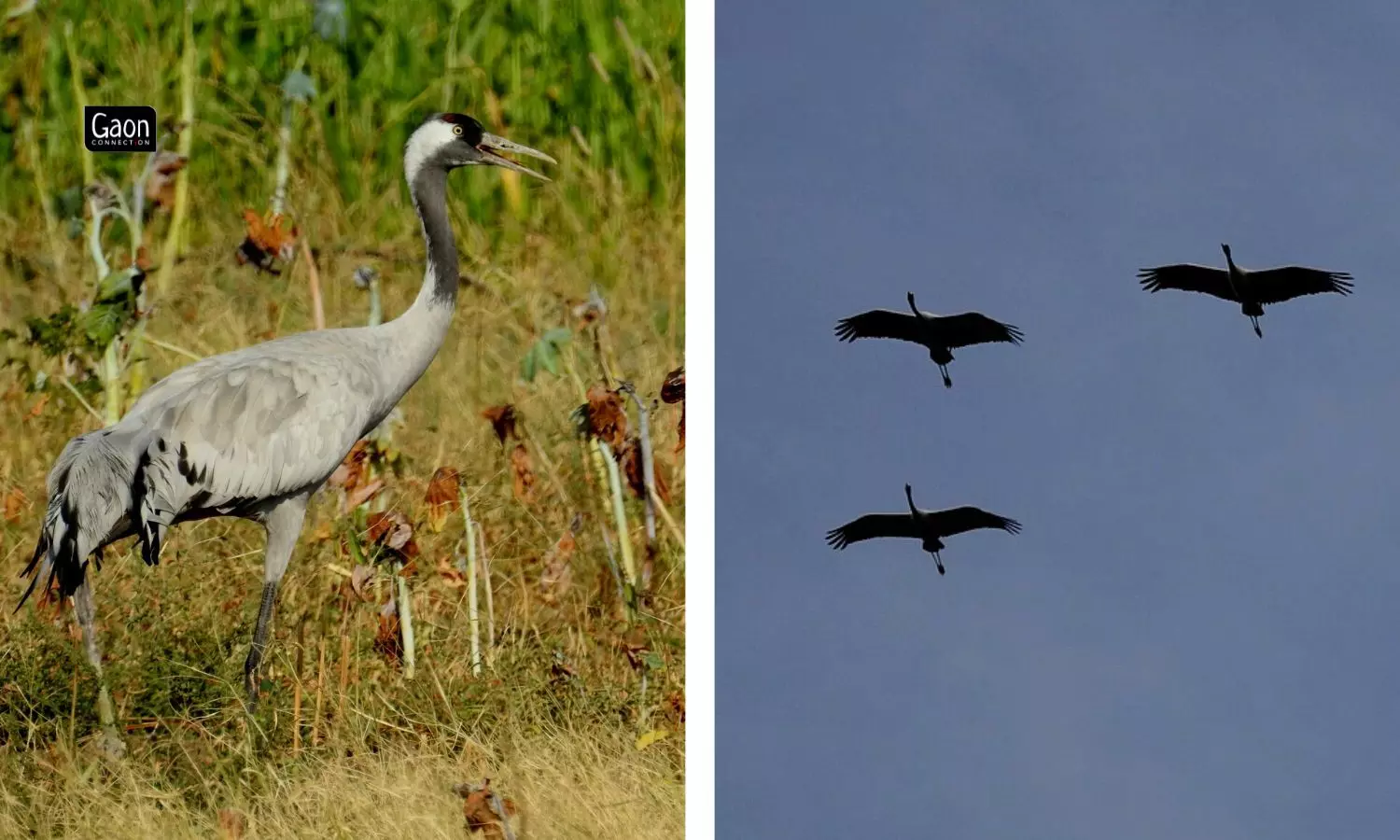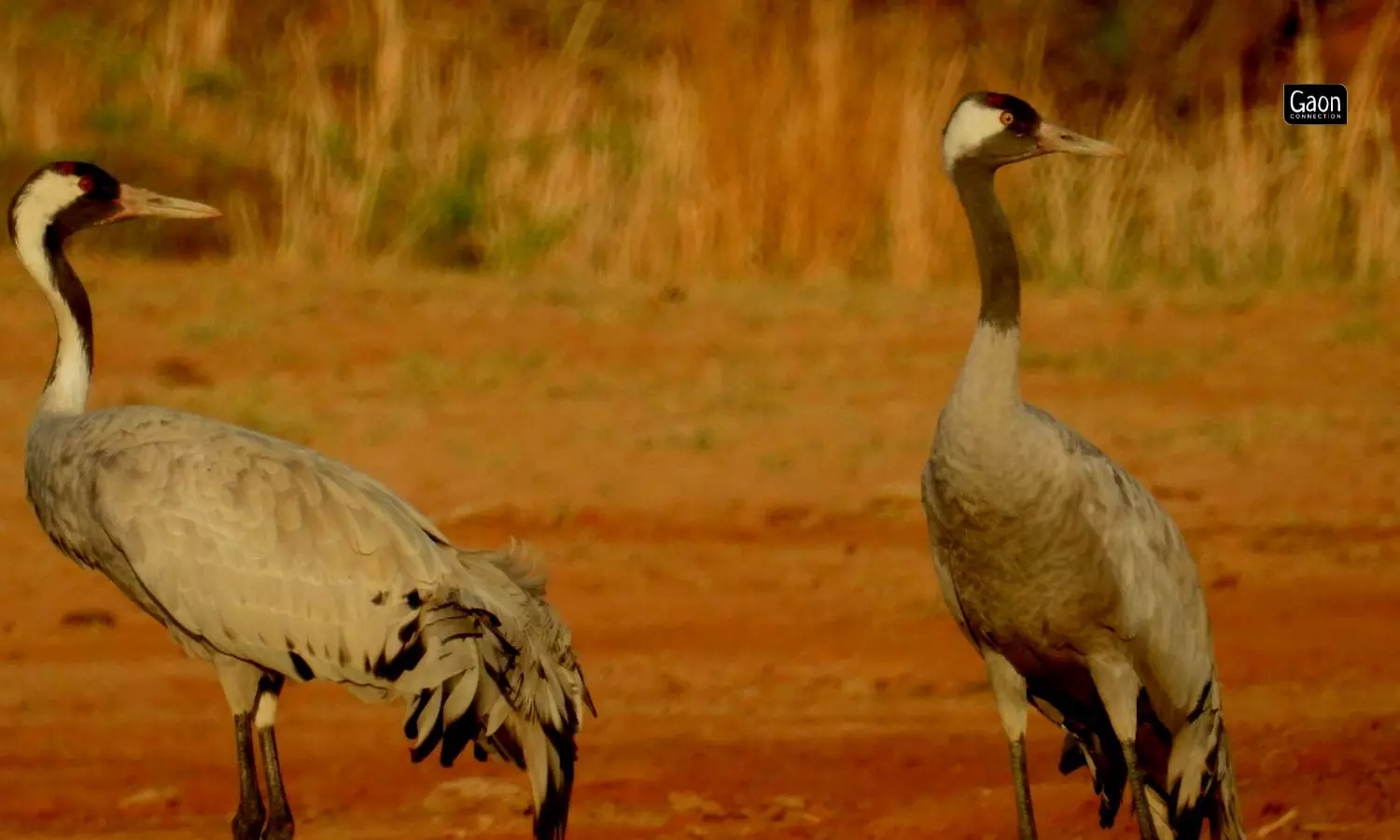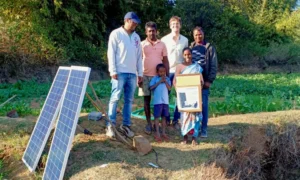Christmas is back. It’s time to decorate trees, bake cookies, look forward to gifts, drink hot chocolate with marshmallows in it, visit the grandparents, or even travel and welcome in 2024.
But, do you know what birds, who live in the ice-cold regions of the world do during the same winter season? It is vacation time for them too, but it ain’t an easy one.
Let me tell you about Vadla, a common crane, who flies from the bitterly cold Kazakhstan in Central Asia to the warmer climes of Gujarat in west India, and then returns to Kazakhstan once the winter ends. Gujarat is a very important destination in the crane migration map.
Also Read: Taking Flight – The Latest Issue of Connection, a Kids Magazine By Gaon Connection, Is Out
Vadla’s Heroic Journey
Once upon a frosty morning in vast and snowy Kazakhstan, there lived a beautiful crane named Vadla. Vadla was no ordinary crane. She was elegant with her grey feathers, black-tipped wings and lovely orange-ringed eyes.
As the chill of winter descended, Vadla felt the familiar restlessness. It signalled that it was time for her to take that 5000 kilometres flight to Gujarat.
As the season changed, Vadla and her companions prepared to embark on their extraordinary journey all the way to Nal Sarovar Bird Sanctuary, a Ramsar Site in Gujarat. A Ramsar Site is a wetland of international importance as a conservation area.
This type of migration journey of thousands of kilometres amongst the cranes is passed down through generations of crane families.
Vadla could feel the excitement of a warm home awaiting her in the village of Vadla in Gujarat, India. Yes! Vadla, was named after the village she stays in when she visits Gujarat.

This type of migration journey of thousands of kilometres amongst the cranes is passed down through generations of crane families.
With a flutter of her heart and her wings that she spread wide, Vadla took off into the limitless skies. Vadla, all of 4.72 kgs, led her companions in a V-formation on a journey that would culminate in India.
The landscape below transformed from snow covered mountains to huge dry deserts and fertile green plains. For people looking up into the skies, Vadla and the other cranes were a vision to behold.
The journey was long and tiring. Just imagine travelling almost 4,500 kilometres in 12 days, which is about 375 kilometres in a day!
Days turned into nights, and nights into days, as the cranes flew. They encountered various challenges along the way, from unpredictable weather to predators. But their collective strength and determination accompanied them throughout. Vadla found comfort in the companionship of her family.
As the cranes reached the dry and hot landscapes of Rajasthan, they noticed the air became warmer. Vadla knew they were nearing their destination in Gujarat, where the sun would be soothing and gentle to their weary wings.
The final stretch of the journey brought them to Nal Sarovar Bird Sanctuary of Vadla village, in Gujarat. As the cranes swooped down gracefully, their long legs reached out to touch the water. Vadla and her companions had landed in their winter home.
The wetland is a paradise of abundance – a place where the cranes rest, feed, and enjoy. Vadla felt a deep sense of satisfaction as she dipped her beak into the refreshing waters. The journey had been extremely tiring, but the rewards were numerous.
The cranes lay in the sunlight, soaking the warmth. The villagers welcome these annual visitors with affection and love, and keep the wetland safe for the birds.
Months passed, and as winter began to loosen its grip on Kazakhstan, Vadla and her fellow cranes felt the familiar call to return home.

As the cranes reached the dry and hot landscapes of Rajasthan, they noticed the air became warmer.
In March, they took off from the sanctuary and flew for another 15 days to reach their breeding ground in northern Kazakhstan. This time they flew 323 kilometres a day.
Returning to Kazakhstan, Vadla felt a sense of accomplishment. The cycle of migration, an every year ritual for the migratory cranes was complete. Next year, it would happen again.
How do I know all this about Vadla and her friends? That is because a group of scientists of the Wildlife Institute of India, Dehradun, fixed an active GPS (global positioning system) device, which communicates via the satellite or the GSM (global system for mobile communication) network, just above the knee of the long-legged bird to track her movements.
The device is very light and therefore does not hamper her flight. And as it is solar charged, it keeps the transmission going for a long time.
The scientists are now planning to tag more common cranes that will help improve understanding of these long-distance travellers that are a flagship species of the Central Asian Flyway.
Anusha Passi is 16. She lives in Mumbai and studies at Jamnabai Narsee School.


















